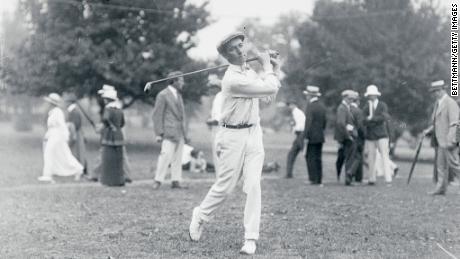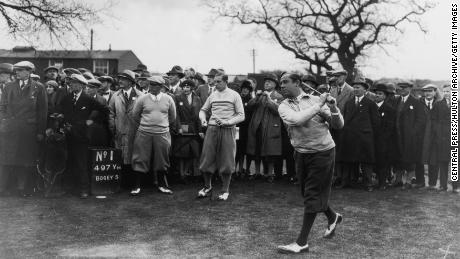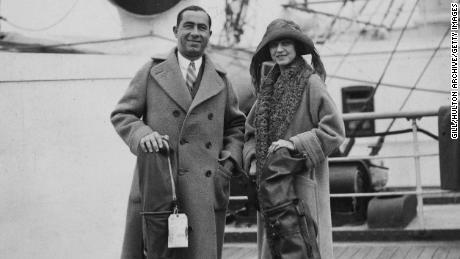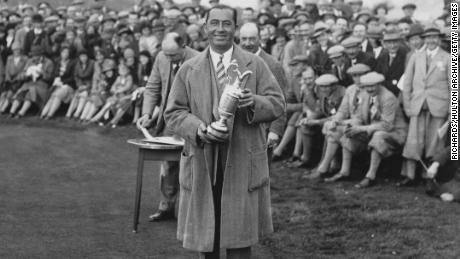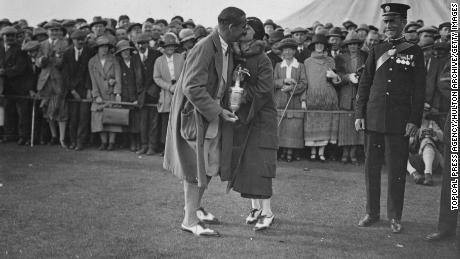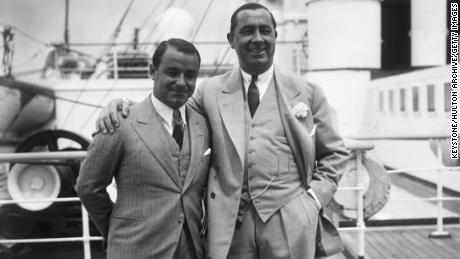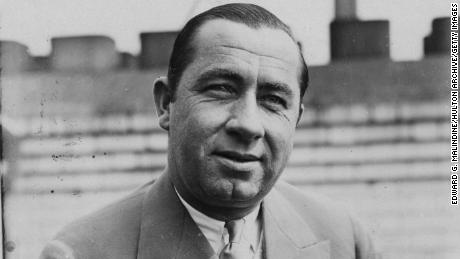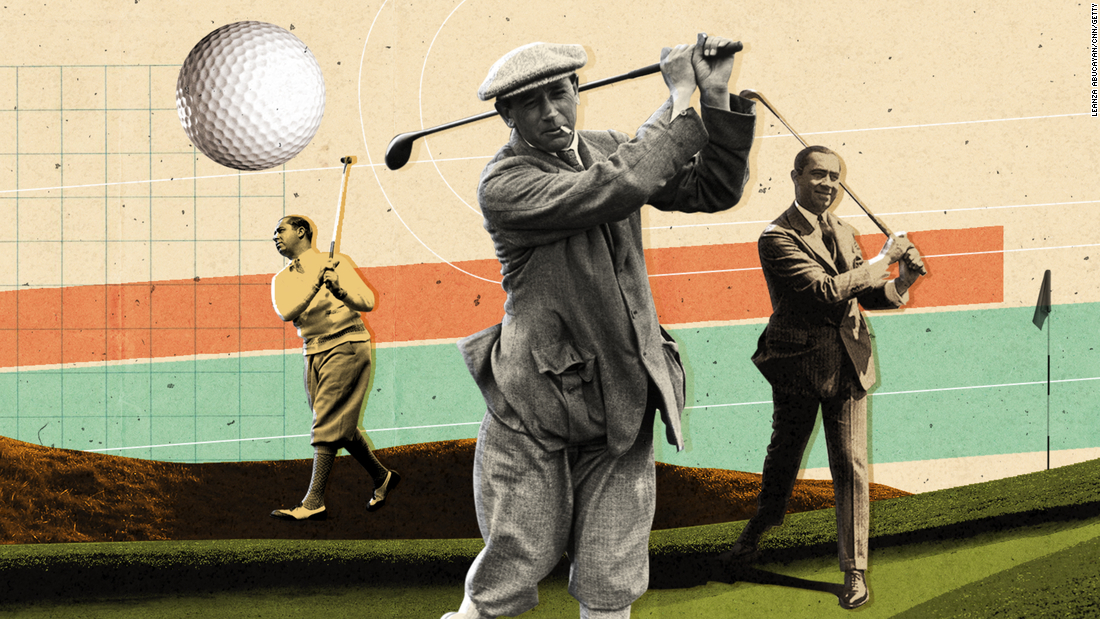
When Hagen arrived at the club and to avoid lumbering around with the 27-pound trophy, he paid the taxi driver to drop it off at his hotel.
It was the last he saw of the trophy.
The Wanamaker never arrived at his hotel, and although Hagen knew he no longer had it in his possession, he kept that to himself.
At the next year’s PGA Championship, when asked to produce the trophy as the returning champion, Hagen said with his typical bravado: “I will win it anyway, so I didn’t bring it.”
Sure enough, he did win it. And in 1927, he won it for the fourth time in a row. It was only in 1928, when he was knocked out by Leo Diegel, that he was forced to admit he no longer had the trophy in his possession.
A replacement was made, before the original mysteriously turned up 1931.
Beginnings
Hagen was born into a “blue-collar family” in 1892 in Rochester, New York, explains Tom Clavin, author of ‘Sir Walter: Walter Hagen and the Invention of Professional Golf.’
Hagen’s early days in golf were spent as a caddie at the Country Club of Rochester.
By his mid-teens, Hagen was a proficient player and was helping at the pro shop at the club. He made his professional debut at age 19 at the 1912 Canadian Open.
Playing in his debut major — the 1913 U.S. Open — Hagen shocked many when he finished tied for fourth. But upon his return to Rochester, he came with tales of mistreatment from the other professionals.
So he made a promise to them. “I’m going back next year and win that tournament.”
And he did just that.
‘He represented the barbarians at the gate of golf’
Golf wasn’t the only sport Hagen was proficient at. From an early age, he also excelled at baseball.
But his talent at baseball and blossoming golf career gave Hagen a dilemma.
“Baseball is a team sport. Walter liked the attention to be all on him,” Clavin explained. “So he didn’t want to share the attention with the pitcher or the first baseman or the catcher.
“I think a big part of it was that he was not only good at it, probably figured he would be better as a golfer than as a baseball player, and he could call his own shots, so to speak.
“He didn’t have to depend on anybody else. Either he won because he was better than everybody else on the field, or he lost because he wasn’t. And in baseball, you’re sort of dependent on the other guys on the field.”
As Clavin describes, when Hagen was making his first steps in golf, it was a sport in its nascent stages in the US. And Hagen, being an aspiring professional, saw a huge potential for growth, both for the game and for himself.
His professionalism irked many in golf.
“He sort of poked the aristocracy in the eye. And there were a lot of people in the aristocracy who really despised Walter Hagen because of what he represented,” Clavin explained.
“He represented the barbarians at the gate of golf, and he took that as motivation, and they despised him even more when he kept winning.”
On the town
With plenty of disposal income, Hagen was keen to enjoy the fruits of his labour.
He also trie marriage briefly, but Clavin says that it “didn’t work out very well.”
As a result of his “extravagant lifestyle” choices, as Clavin describes it, winning became a necessity.
“He wanted to win that first-place purse, he wanted to go on these paid tours, he wanted to do these endorsement deals and endorse cigarettes and other products,” said Clavin.
“And so obviously, if he had not been able to win as often as he did, he would have had to at some point face the reality of: ‘I can’t live the lifestyle because I simply can’t afford it.'”
During his illustrious career, Hagen won 11 major titles — the most ever at the time — as well as 45 PGA Tour victories.
What’s even more remarkable is that the Masters had not even been founded until well after Hagen’s peak.
Many of the stories that are recounted about Hagen are tales of his hitting the town and turning up looking disheveled for the play the following day.
However, Clavin believes that Hagen would not actually go out the night before and was attempting to lower the guard of his opponents. Clavin calls Hagen “the first great sports psychologist.”
“For example, suppose it was a major tournament, he would have his limousine show up and he would get out of the limousine in a rumpled tuxedo,” Clavin said.
“So everybody would think: ‘Oh, poor Walter, he’s probably very hungover. He’s not going to be a factor today.’ Then he’d go into the locker room and change and come out to the first tee and strike one right down the middle of the fairway.
“He knew before he even hit his first ball, he figured: ‘I’m a winner and these guys are going to be losers because they are somewhat intimidated by me. They can’t figure me out.’ He had a mental advantage that was unmatched by his competitors at the time.”
Origin
Hagen earned favor with his fellow golfers by always picking up the bill in the bar. His trailblazing nature when it came to proving golf a reliable revenue stream also endured himself to others.
They both made endorsing golf equipment for players a more commonplace endeavor and something which helped to make the sport more accessible for all.
“All the professionals … should say a silent thanks to Walter Hagen each time they stretch a check between their fingers. It was Walter who made professional golf what it is.”
Not only that, he played a vital part in the establishment of the Ryder Cup, featuring in the early editions of it and being a six-time captain of the US team, winning it four time and losing just twice.
And so, given all Hagen did for the sport, Clavin believes it is no exaggeration to call him the “father of professional golf.”
“Walter Hagen was very much aware of what a pioneer he was. He could look around the landscape and realize that there were very few professional golfers, but of those few golfers, he was the most successful one.
“And so he understood the responsibility he had to continue to play well and not even play well for his own purposes to win the tournament purses, but to sort of be like this Johnny Appleseed of golf; he did go on these world tours, which nobody else had done before.
“Not Bobby Jones, not anybody else. To go on these world tours more than once that took him to Africa, took him to Asia, took him to Europe obviously, took him to pretty much every continent except Antarctica to play these exhibition matches and spread the word of golf and to introduce golf to countries that had never even had it.”
